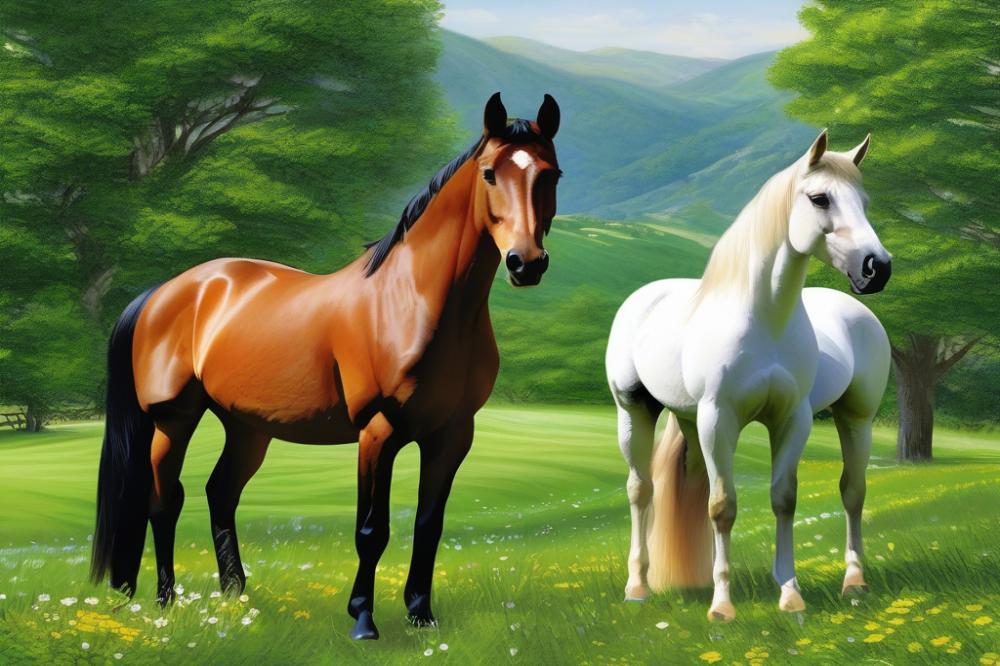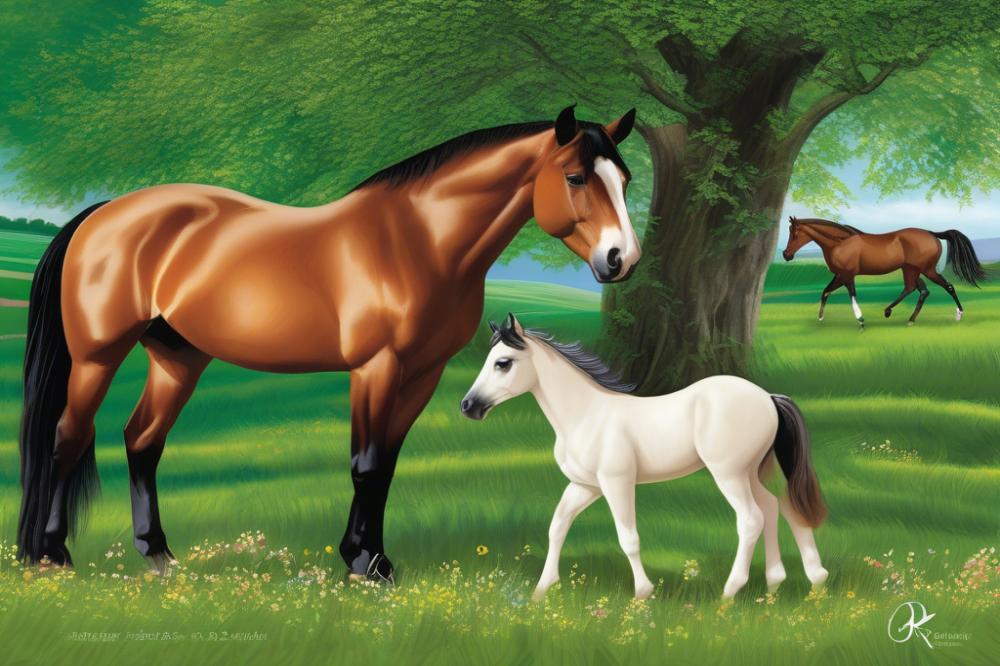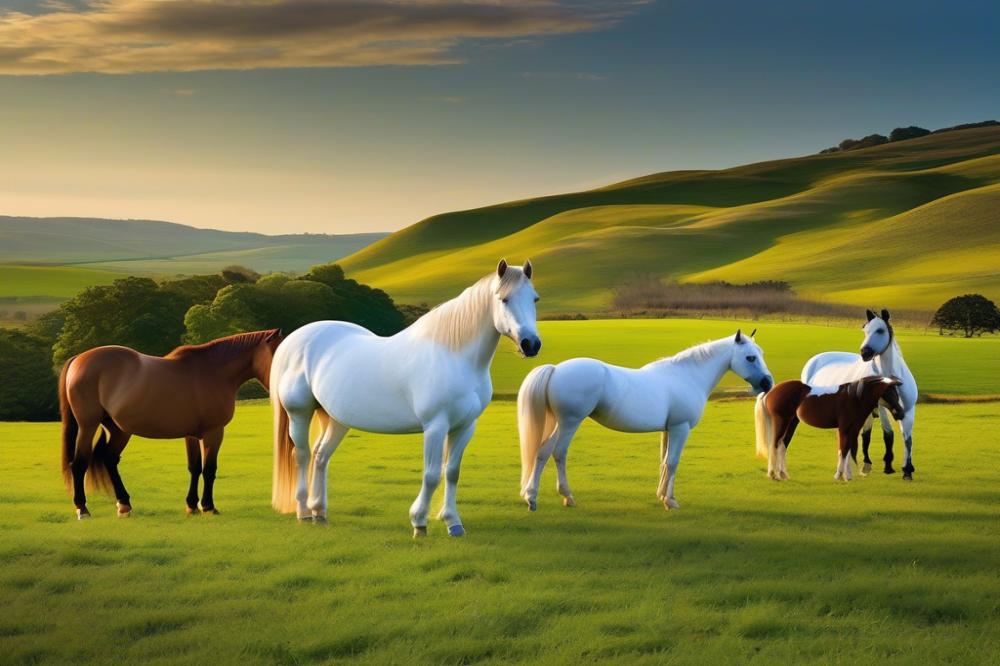Introduction
breeding techniques refer to the methods used to produce offspring with desired traits. These methods can range from selective breeding to advanced genetic technologies. Such practices are critical when dealing with rare and endangered horse breeds. Many of these horses are on the brink of extinction due to various factors, including habitat loss and reduced genetic diversity. Each breed has its own set of characteristics that make it special, and losing them would mean losing a piece of history.
Preserving these horses is important for several reasons. They represent cultural heritage and serve as reminders of our past. Furthermore, these animals often possess unique genetic traits that can benefit future breeding programs. Healthy populations contribute to the biodiversity of equine species. Protecting these breeds allows us to maintain this diversity and all the benefits that come with it.
This article focuses on techniques and strategies for preserving rare breeds. We will explore various methods that can be employed to improve their numbers and health. The discussion will include traditional practices and modern science. A comprehensive approach is necessary for effective conservation of these cherished animals. Stay tuned as we dive into the specifics, examining how efforts can lead to a successful breeding program.
breeding techniques

Various methods exist for breeding animals, especially those that are rare or endangered. These methods include natural mating, artificial insemination, and controlled breeding programs. Each approach serves a purpose in conservation efforts.
Importance of Genetic Diversity
Genetic diversity is crucial for the health of any population. It allows for adaptability and resilience against diseases. Breeding programs aim to maintain or increase this diversity. When many individuals contribute genetic material, the population is less likely to face extinction.
Role of Captive Breeding
Captive breeding plays a significant role in preserving species that are on the brink of disappearing. Animals are held in secure environments, which can mimic their natural habitats. Breeders manage these populations carefully, monitoring health and reproduction. This process creates a safety net for species that cannot survive in the wild.
Benefits of Artificial Insemination
Artificial insemination offers several advantages for breeding outcomes. This technique allows for the introduction of genetic material from distant animals. It can help prevent inbreeding, which is a risk in small populations. Additionally, transport of sperm is less stressful than moving live animals.
Through these techniques, conservationists hope to foster growth in endangered species. They work tirelessly to create sustainable populations that can thrive in their natural environments.
Conservation Efforts

Overview of Conservation Initiatives for Rare and Endangered Breeds
Many organizations work tirelessly to protect rare and endangered breeds. These projects focus on habitat preservation, legal protections, and breeding efforts. Each program has specific goals to maintain ecological balance. Moreover, partnerships between governments and non-profits enhance these initiatives. They highlight the importance of sustainable practices.
How Breeding Techniques Contribute to Wildlife Preservation
Various strategies in animal breeding play a critical role in preserving wildlife. Techniques such as genetic management help prevent inbreeding and improve health. These methods can increase population viability. Moreover, selective breeding allows for desirable traits to be emphasized. Successful breeding programs result in thriving animal populations.
Importance of Breeding Programs in the Context of Conservation
Breeding programs serve a vital function in conservation efforts. They create genetic diversity, which is essential for survival. Programs also help reintroduce animals into their natural habitats. This process can rebuild populations that have dwindled due to human activity. The overall aim remains the restoration of stable ecosystems.
Engaging Stakeholders in Conservation Efforts
Involvement from a wide range of stakeholders is crucial for success. Local communities, governments, and conservation groups must collaborate. Each party brings different expertise and resources. Public education campaigns can raise awareness and garner support. Engaging volunteers can provide additional manpower for various activities.
Habitat Restoration and Sustainable Farming

Connection between Habitat Restoration and Breeding Success
Restoring natural habitats plays a vital role in the survival of rare and endangered breeds. Healthy ecosystems provide the resources these animals need to thrive. Reduced pollution and improved vegetation can enhance breeding success rates. Animals bred in natural environments tend to develop better health. Stronger gene pools emerge from populations thriving in their original habitats. This resilience can positively affect breeding outcomes.
Examples of Sustainable Farming Practices that Support Horse Breeding
Sustainable farming methods can greatly support horse breeding efforts. Rotational grazing is one effective method that prevents overgrazing, allowing pastures to recover. This practice benefits both the land and the horses. Another approach is the integration of cover crops. These crops improve soil health and offer additional food sources. Farmers can use organic fertilizers instead of harmful chemicals. This practice keeps the land healthy and reduces the risk of contamination. Responsible water management also plays a key role. It ensures that horses have access to clean water without depleting local resources.
Role of Aquaculture in Maintaining Ecological Balance for Breeding Efforts
Aquaculture can contribute positively to efforts in breeding animals. Fish farms can provide a sustainable source of protein. This can be a beneficial food source for horses and other livestock. Properly managed fish farms can create healthy habitats for aquatic species. These habitats contribute to the overall health of the ecosystem. Biodiversity increases when aquatic spaces are balanced, supporting all land and water life. A diverse environment ultimately aids in the well-being of species involved in breeding initiatives. Strategies in aquaculture should aim to complement these breeding efforts.
Challenges in Breeding Rare and Endangered Breeds
Breeding programs for rare and endangered species face several challenges. Limited genetic diversity often hinders the potential for successful breeding. When few individuals are available, genetic bottlenecks can occur. This situation reduces the gene pool further, making it difficult to maintain healthy populations.
Environmental factors play a significant role in breeding success. Changes in climate can affect habitats, food sources, and mating behaviors. In addition, human activities can disrupt natural breeding patterns. For instance, habitat destruction leads to stress on the species, complicating the breeding process.
Another challenge involves maintaining genetic diversity over time. A narrow genetic base may lead to inbreeding, which results in health problems. It is critical to introduce unrelated individuals into the breeding program. This practice helps to enhance genetic variation. Programs that focus on this strategy tend to succeed more often.
Captive breeding programs must carefully monitor environmental conditions. Temperature, humidity, and available resources can impact breeding success. Keeping proper records of breeding pairs helps track any genetic issues. Additionally, observing animal behavior under controlled environments offers insights into natural mating preferences.
Addressing these challenges requires a strategic approach. Breeders often collaborate with conservation biologists and ecologists. Together, they work to develop methods that promote a balanced gene pool. Fostering partnerships can lead to innovative solutions that benefit breeding efforts.
Case Studies and Success Stories
Many breeding programs have achieved remarkable successes in saving rare and endangered horse breeds. One significant example is the Mustangs of the West. These horses faced population decline due to habitat loss and overgrazing. Through controlled breeding and land protection, their numbers have increased. Dedicated groups worked to restore their genetic diversity, which had become a concern over the years.
Some programs utilize artificial insemination to enhance genetic variety. This innovative method allows breeders to introduce new genes without the need for transportation. Riders and trainers often help by supporting these efforts through education and engagement within the community. Raising awareness about these noble animals plays a vital role in their conservation.
Another successful initiative includes the recovery of the Przewalski’s horse, a true symbol of conservation. Once thought extinct in the wild, dedicated breeding efforts have seen them return to their natural habitats. These horses were bred in captivity and then gradually reintroduced. It was a painstaking process, but the impact has been significant.
Lessons from these examples highlight the importance of community involvement. Engaging local populations creates shared ownership of conservation goals. People caring for these animals fosters a sense of pride in their heritage. Sound strategies often lead to increased support and volunteer efforts, which are critical in sustaining long-term projects.
Education also plays a key role. Programs that teach about the ecological significance of these breeds often spark interest and excitement in younger generations. Schools and organizations collaborate to offer workshops and hands-on experiences, opening doors to future conservationists.
Each story of success sheds light on what is possible through determination and innovation. Breeding programs demonstrate the potential for positive change. As more people become aware of these initiatives, there is hope for continued progress in the preservation of endangered horse breeds.
Looking Forward: The Importance of Breeding and Conservation
Breeding techniques play a crucial role in the conservation of rare and endangered breeds. As populations dwindle, the need to maintain genetic diversity grows. Without such efforts, we risk losing valuable characteristics that these animals possess. Their unique traits can contribute to the ecosystem’s health. This makes preservation efforts vital not just for the species themselves, but for our environment too.
Community involvement is essential. People must unite to support conservation initiatives. Schools, organizations, and individuals can all contribute. From funding research to raising awareness, every effort counts. Encouraging more people to engage with wildlife can nurture a sense of responsibility. This collective action ensures that endangered species continue to thrive.
Looking ahead, breeding practices will evolve to meet new challenges. Advances in science will likely offer fresh strategies. Techniques such as artificial insemination and genetic mapping are becoming more refined. These tools can help manage populations effectively. They can also help in understanding specific needs of various breeds.
By continuing to focus on these strategies, society can better secure the future of our most vulnerable animals. Everyone has a part to play in this mission. Support local organizations, advocate for environment-friendly policies, or simply educate others. The future of rare breeds is intertwined with our actions today. Let us work together toward a world where all species can flourish.



